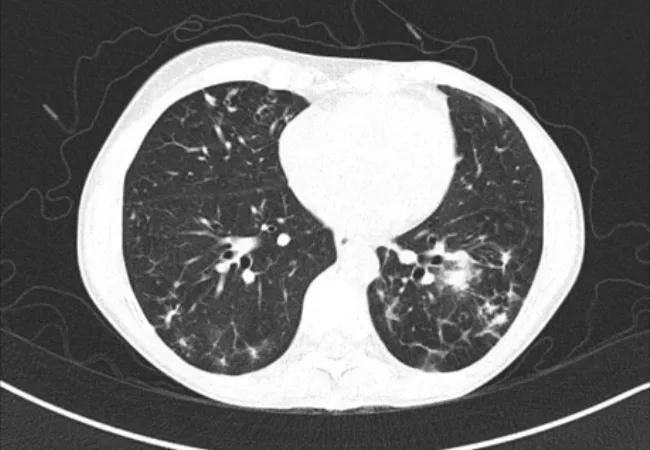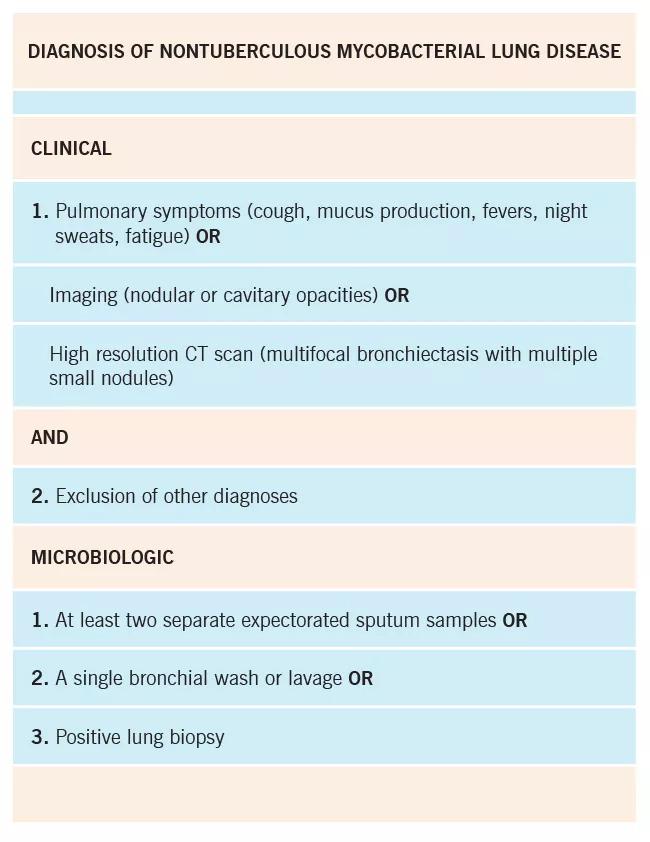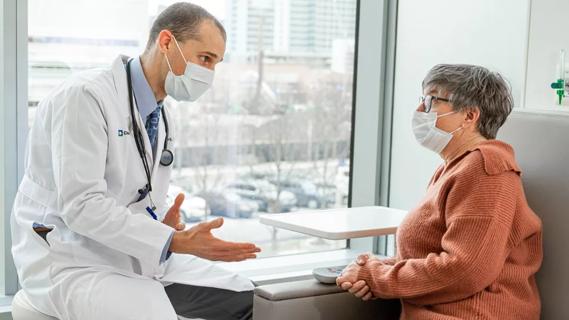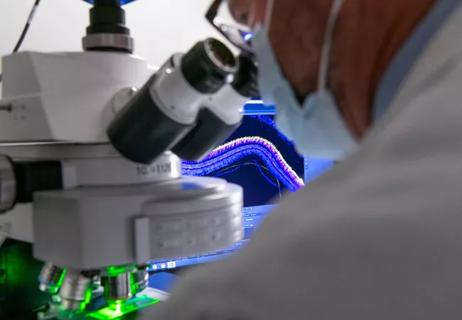A diagnostic and therapeutic challenge

Cleveland Clinic is a non-profit academic medical center. Advertising on our site helps support our mission. We do not endorse non-Cleveland Clinic products or services. Policy
Pulmonary nontuberculous mycobacterial (NTM) infections due to organisms such as Mycobacterium avium complex (MAC) and Mycobacterium abscessus are being diagnosed with increasing frequency. These organisms are commonly recovered on sputum or bronchoscopic cultures obtained as part of an evaluation for an abnormal CT scan of the chest demonstrating multiple pulmonary nodules or bronchiectasis. Below is a thoracic CT of a patient with MAC lung disease and characteristic radiologic findings of centrilobular nodules and tree-in-bud opacities in the bilateral lower lobes in the setting of underlying diffuse bronchiectasis.
The diagnosis of NTM infection is often less than straightforward, and decisions regarding treatment of NTM infections can be complicated. Sometimes patients have underlying chronic lung disease that may need to be addressed first. Expert consultation is often warranted.
Both clinical and microbiologic criteria must be met for a diagnosis of NTM lung disease. The below table shows the diagnostic benchmarks from the American Thoracic Society and Infectious Disease Society of America. These criteria help differentiate true infection from a transient infection or colonization.

It is important to note that since patients with NTM frequently have underlying chronic pulmonary conditions, these should be treated first. For example, patients with bronchiectasis may be co-infected with Pseudomonas aeruginosa. Clinicians should treat the P. aeruginosa first, then reevaluate the symptoms and imaging.
Discovery of NTM lung disease does not necessarily mean physicians should immediately begin treatment. Lung disease from these infections progresses slowly, so there is time to evaluate whether NTM or a transient infection or colonization is responsible for the patient’s clinical symptoms and/or radiographic abnormalities.
If clinical and microbiologic criteria are met, then clinicians can discuss with the patient the risks and benefits of therapy. The length of drug therapy is typically a minimum of 18 months and at least 12 months from the time cultures have turned negative. The medication regimen requires monthly monitoring, and patients often report difficulty managing the gastrointestinal side effects.
The majority of patients with pulmonary NTM have underlying lung disease such as bronchiectasis, chronic obstructive pulmonary disease and cystic fibrosis. In addition to treatment of the airway infection, it is important to address airway clearance. A frequently used, twice-daily regimen for airway clearance consists of nebulized albuterol followed by nebulized hypertonic saline (3 percent or 7 percent), and then use of a positive expiratory pressure device with airway vibration, such as the acapella® Vibratory PEP Therapy System.

In addition, many patients will mobilize secretions with exercise. If a patient qualifies for pulmonary rehabilitation, this is an excellent option. If they do not qualify, then clinicians can suggest a program consisting of cardiovascular and core strengthening with a goal of 150 minutes per week.
Medical regimens for NTM are complex. They can consist of oral, intravenous and inhaled antibiotics that are not routinely encountered in clinical practice, and monitoring for side effects and toxicities should occur at least monthly. Thus, outside expertise may be needed.
The following situations may warrant referral:
At Cleveland Clinic, our NTM Program brings together experts from infectious disease, pulmonary medicine and respiratory therapy who collaborate with patients in the diagnosis and treatment of these difficult-to-treat pulmonary NTM infections.

A review of IDSA and NIH guidelines

Caregivers are provided with real-time bronchoscopy patient findings

New program sets out to better support underserved patient populations

As the U.S. has seen an increase in respiratory-related morbidity and mortality, supporting future respiratory researchers has become imperative

Diagnosing the cause of a chronic cough can be challenging and timely, but multidisciplinary collaboration and the development of new treatments are improving the process

Despite a decline in numbers, the demand for respiratory therapists continues to rise

A mindset shift has changed the way pulmonologists both treat and define PFF

Will enable patients with long COVID to enroll in national clinical trials